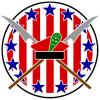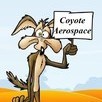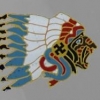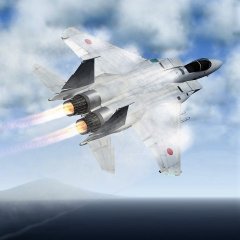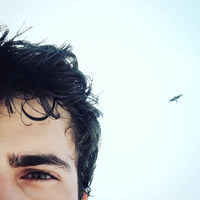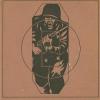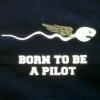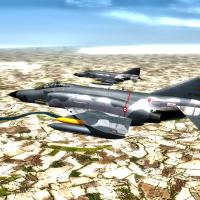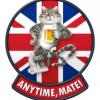Leaderboard
Popular Content
Showing most liked content on 08/18/2019 in all areas
-
7 pointsForgot to tweak the FM for this beauty, for the Cold War Prop FM pack...will upload it soon with a ver. 1.2 of the package. Have also increased sensitivity of the rudder on the P-47M and N types, with slightly snappier aileron response on the type N too, and desensitized aileron response on the type M, as well as on the earlier D "Razorback" sprint upgrade included with the pack. The 47N is a bit slower than the M variant but still very impressive. Top speed around the 750s kph at about 9800 m alt...one of the best high-alt. prop aircraft in the package now. Does great in dogfights against the Lavochkin 11 if you maintain energy...the LA-9 is a bit more challenging but still workable if you fly the Jug smoothly. Happy flying, Von S
-
6 pointsI have some planes started for the Spanish Civil War. They're all to the point where the fun part is done, finishing them will just be tedious. I'll finish them if anyone is interested, but it will take some time.
-
6 pointsThis is an interesting Skyhawk Walkaround. This aircraft is my dream jet airplane.
-
5 pointsanother one almost finished finally. been ignoring the WW2 stuff, have quite a few more that I hope to finish B
-
4 pointsHello Dear Friends! As you know, to work well one needs to have a good rest. While the summer season continues, and our colleagues go on vacation, I will tell you how important it is for a military pilot to be able to save and properly spend his strength during combat. Probably you have already realized that in today's diary I want to talk about our new pilot physiology modeling, which we are preparing for the release in the next update. Our Beta testers will receive this model for tests today. About Pilot Physiology The focus of the new physiology model is, above all, on a more realistic imitation of a person's tolerance to high G-load. Although this is not the only change in the pilot physiology, you will most likely notice it first, so let's talk about it in more detail. As you know, we all are different, and each of us has different stamina, physical strength, and ability to resist negative environmental factors. Therefore, the ability of a particular pilot to withstand high G-load is, of course, purely individual, and depends on a good number of factors: age, state of health, fitness, whether a pilot slept well the night before, how much he ate and how long ago, and even what his emotional state is. Of course, we cannot collect all this information about you, and take all these factors into account in such detail; such a model would be excessively complex, although it would probably allow the player’s best immersion into virtual reality. Nevertheless, we found that the most reasonable approach would be to choose a certain averaged model of an average pilot physiology. By "average pilot" we mean a trained pilot in good physical condition, who often performs aerobatics. A large number of different medical studies with the collected statistics of experiments with pilots and volunteers come to our aid. Based on them it is possible to establish a “middle way” of the typical human tolerance to high G-load. The first thing that all researchers pay attention to is the fact that the amount of G, both positive (when a pilot is “pressed” into his seat) and negative (when a pilot is “pulled away” from his seat and “hangs on the belts”) depends primarily on the duration of the G-load and on the rate the G-load was applied. For example, at a positive +6G the “average” pilot loses consciousness within the first 5-8 seconds, but the same pilot quite successfully sustains +5G for about 40 seconds, if the rate of G-load application was less than 1G/sec. However, if you create the same +5G in just 1-2 seconds, then loss of consciousness will occur in 5-7 seconds. In aviation medicine, this phenomenon is explained by the “hemodynamics” of the cardiovascular system. The body needs some time to mobilize and begin to effectively counteract overload. This is illustrated in the chart from the article written by Anne M. Stoll, “Human tolerance to positive G as determined by the physiological end points” published in The Journal of aviation medicine in 1956: In our new model of human physiology, all these factors are now taken into account. If a high G-load is applied within 1-2 seconds, the negative consequences (visual and hearing disorders) do not appear immediately, but rather with a 2-3 seconds delay, then a quick “crisis” follows, and then, after a few seconds, the body mobilizes and its ability to tolerate G-loads becomes better. This “crisis” can be avoided, or at least reduced, if you pilot more smoothly and create G-load gradually and slowly. Here is another graph that shows how long an average pilot is able to withstand positive and negative G until he loses his consciousness. The blue line is a summary of data we collected as a result of our various medical studies analysis. Red dots are the results our new model shows: As you can see, pilots tolerate the positive g-loads much better than the negative ones. In addition, now we also take the pilot’s fatigue factor into account, based on the data mentioned above. This means that every pilot’s maneuver performed with a large g-load is no longer in vain, and the more actively a pilot maneuvers, the worse he and his crew will suffer further g-loads. If the pilot is already pretty worn out by maneuvering combat, be aware that a new opponent who entered the battle will have a significant advantage, and maybe you should get out of the dogfight and catch your breath. This may take you a few minutes. Another important part of this work is the reconfiguration of the visual effects of visual impairment. We brought it into a full compliance with the sequence described in the scientific literature. First, under the influence of positive g-load, a pilot begins to lose color perception (a so-called “grayout”). Then his peripheral vision field (or a “tunnel vision”) narrows, until it becomes completely dark in the eyes (a so-called “blackout”). The visual impairment is also accompanied by hearing loss. On a negative g-load, the effect of “tunnel vision” and loss of color perception do not happen, because, unlike a positive overload, there is no oxygen starvation of the optic nerve. But on the other hand, the pilot feels a rush of blood to his head, which is expressed in the appearance of a noticeable red tint of vision (a so-called “redout”), and the sharpness of vision also deteriorates. I have mentioned a “loss of consciousness” several times already. Yes, now we are simulating this state, too. A pilot can lose consciousness at large positive or negative g-loads if the threshold of their physiological tolerance is exceeded (taking into account the duration of g-loads, the pace of their creation and accumulated fatigue). A harbinger of the loss of consciousness at the positive g-load is a blackout, although even having completely lost his eyesight, the pilot is still able to control his aircraft for some time. At the negative g-load loss of consciousness occurs more unexpectedly, and the only way to determine it in time is by a sharp deterioration in visual acuity. Studies have established that, depending on a number of factors, a usual period of a G-lock can be as long as 10 to 15 seconds, and during this time the aircraft will remain uncontrollable. Keep in mind that each subsequent loss of consciousness will cost you even greater loss of time and energy. WWII fighter pilots were very human, not Superman and they did experience pretty high G-loads even in piston planes. Another feature of this model is an anti-g suit a pilot has. On average, according to various studies, the anti-g suit increases the physiological tolerance threshold to positive g-load by 1.5 - 2G, so pilots with the anti-g suits will certainly get a significant advantage in dogfight. The anti-g suit does not affect tolerance to a negative g-load. In conclusion, I would like to mention that we also limited the pilot’s ability to bail out at the airspeed of more than 400 km/h, or under the influence of positive g-load of more than +3G (which is the physiological limit in terms of the ability of a person to get out of the seat). These numbers refer to a healthy pilot; in case of injury getting out of the cockpit will be even more difficult for a crew. The effect of hypoxia model on g-load tolerance model has also been refined and will take air pressure into account more correctly. Preparing for the release of a new physiology model, we understand that for some players it incomprehensible and not obvious at first. Therefore, we left you the opportunity to choose a simplified physiology model in the realism settings, which will work quite similar to the current model, and will not take into account the pilot’s fatigue, the hemodynamics of his cardiovascular system, or limit the pilot’s endurance according to the duration of g-loads or the pace of their creation. Also, in a simplified model your crew will not be able to lose consciousness. At the same time, this simple model will use the new reconfigured effects of visual and hearing disorders, and the magnitude of the g-load at which these disorders occur will be brought into line with the updated data from the new model. We really hope that the new model of the pilot’s physiology will make the gameplay more interesting, and significantly change the tactics of dogfight. So, the players will now have to take care of the physical condition of the pilot and be more careful about active maneuvering, and this will take us one step closer to the reality of air combat. Andrey “Petrovich” Solomykin – Lead Engineer News from Jason Bodenplatte Coming Along Nicely! We continue to work on the BOBP map and its large list of airfields and urban areas which is something rather new for us. This map has been a challenge like never before and we have it functioning in Beta, but it has a little way to go still. However, our last three Allied planes are coming along nicely. Check out this beautiful formation of vintage American air power and a bonus shot of the Tempest in flight. The Tempest continues to be tweaked and improved after the first round of Beta testing and the P-38 is also in Beta with small tweaking necessary. The P-51D will also be coming to Beta soon. All three aircraft are quite complex. The different design philosophies of each nation have really become evident as we make more and more planes. We must remind everyone that these planes are still a Work-In-Progress so some of these details in these images may change. Saddle Up Cowboy! Our P-51D-15 “Pony” is nearing the Beta stage as we finish the cockpit and external model. Here are the first pics of the P-51D cockpit. Our model team has done another awesome job! Personal Images in Cockpits Another popular request has been the ability to place a personal picture in the cockpit of your plane. We have now added this capability. New View Distance for Airplanes Yes, by popular request, we have increased the visibility of distant airplanes. This has been a difficult technical challenge, but we think Sturmovik pilots will appreciate this new reality. Can you spot the far-off planes? We’re still tweaking the feature, but it’s in testing. Next Collector Planes in Pre-Production And last but not least, we have begun preliminary work on a couple cool Collector Planes. We aren’t announcing them quite yet, but they will available for pre-order later this year and then in your hangar next year. Sorry, no hints quite yet! You can discuss the news in this thread
-
4 points
-
4 pointsI've found the MontyCZ's Bf 109B (and C) from the SF2 section. Very fastly I've tested it in my FE2 install and this fighter works fine over the wwiCaporetto terrain for example !
-
4 points
-
3 points
-
3 points
-
3 points
-
3 points
Version 1.0.0
283 downloads
Admiral Flota Sovetskogo Soyuza Kuznetsov The Russian only Aircraft Carrier for Strike fighters 2 ------------------------------ this mod aren't completed yet cause i don't know how to create the suitable data.ini for the this model But don't worry it's usable and tested on SF2 patch 2012. i hope in the future this model go to be fixed. ------------------------------ Known issues - Radar is mounted and works well - The engine smoke is not on right positions - CWIS is able to shot but the burst flame is not setted well on each CWIS yet - ASM is not mounted - SAM is not mounted - cable is not setted well ------------------------------ the 3d model is completely from Cadnav and its free then converted to TW model and THIS MODEL IS FOR FREEWARE ONLY! ------------------------------ if you interested to fix this model just PM me, i'll give you the 3ds and any related data, then please reupload to Combatace or send me email with fixed data, model or both. be fair okay my email guntara@usa.com ------------------------------ Thanks to Thirdwire, Combatace and Cadnav. ------------------------------ A bit detail of Admiral Kuznetsov From Wikipedia known as Admiral Flota Sovetskogo Soyuza Kuznetsov (Russian: Адмира́л фло́та Сове́тского Сою́за Кузнецо́в "Admiral of the Fleet of the Soviet Union Kuznetsov") is an aircraft carrier (heavy aircraft cruiser in Russian classification) serving as the flagship of the Russian Navy. It was built by the Black Sea Shipyard, the sole manufacturer of Soviet aircraft carriers, in Nikolayev within the Ukrainian Soviet Socialist Republic (SSR). The initial name of the ship was Riga; it was launched as Leonid Brezhnev, embarked on sea trials as Tbilisi, and finally named Admiral Flota Sovetskogo Soyuza Kuznetsov after Admiral of the fleet of the Soviet Union Nikolay Gerasimovich Kuznetsov It was originally commissioned in the Soviet Navy, and was intended to be the lead ship of the two-ship Kuznetsov class. However, its sister ship Varyag was still incomplete when the Soviet Union collapsed in 1991.The second hull was eventually sold by Ukraine to the People's Republic of China, completed in Dalian and commissioned as Liaoning. -
3 pointsOK, now here goes the first page: Aircraft Weight Summary In order to calculate the balance of the aircraft at the possible changes in aircraft construction and equipment, the weight and center of weight of various aircraft equipment and systems are listed. Aircraft balance calculations are performed using the X and Y axis. Axis X is the aircraft longitudinal axis and matches the aircraft constructional horizon. The Y axis is perpendicular to the X axis and is vertical, situated 600 mm towards the aircraft tail from frame #16. The point where axis X crosses axis Y is the starting point in the center of weight position calculations for the aircraft, its systems and each component, which is part of the various aircraft systems. The coordinates of systems and components, situated in the direction of the aircraft tail on the X axis and up vertically on the Y axis, have a "+" sign and those towards the aircraft nose on the X axis and down vertically on the Y axis have a "-" sign. (Picture 92 shows the location of the balancing axis) Weight summary and load balance and the main equipment with respect to the centering axis are listed in table 27. Weight summary and balancing of loadout with respect to the centering axis are listed in table 28. Weight Summary and load balance and main equipment Table 27 =============== Table headers: Name / PX (measured in kg) / X (measured in meters) / P (measured in kg) / У (measured in meters) / PУ (measured in kg) ============== Aircraft with normal load (landing gear is lowered position) Empty aircraft Normal load Normal load Pilot with parachute R-3R missiles (2 pcs) Cartidges (250 pcs) Fuel in fuel tank #2 V = 830L Fuel in fuel tank #3 V = 340L Fuel in fuel tank #4 V = 175L Fuel in fuel tank #5 V = 245L Fuel in fuel tank #6 V = 185L Fuel in the front wing tanks V = 360L Fuel in the rear wing tanks V = 220L Fuel in the fuel tank on the aircraft back (in the structure behind the canopy that flows into the aircraft vertical tail) V = 530L Launch rail APU-13U-2 (2 pcs) ============================== The other page will follow probably tomorrow.
-
3 points
-
2 pointsView File Admiral Flota Sovetskogo Soyuza Kuznetsov Admiral Flota Sovetskogo Soyuza Kuznetsov The Russian only Aircraft Carrier for Strike fighters 2 ------------------------------ this mod aren't completed yet cause i don't know how to create the suitable data.ini for the this model But don't worry it's usable and tested on SF2 patch 2012. i hope in the future this model go to be fixed. ------------------------------ Known issues - Radar is mounted and works well - The engine smoke is not on right positions - CWIS is able to shot but the burst flame is not setted well on each CWIS yet - ASM is not mounted - SAM is not mounted - cable is not setted well ------------------------------ the 3d model is completely from Cadnav and its free then converted to TW model and THIS MODEL IS FOR FREEWARE ONLY! ------------------------------ if you interested to fix this model just PM me, i'll give you the 3ds and any related data, then please reupload to Combatace or send me email with fixed data, model or both. be fair okay my email guntara@usa.com ------------------------------ Thanks to Thirdwire, Combatace and Cadnav. ------------------------------ A bit detail of Admiral Kuznetsov From Wikipedia known as Admiral Flota Sovetskogo Soyuza Kuznetsov (Russian: Адмира́л фло́та Сове́тского Сою́за Кузнецо́в "Admiral of the Fleet of the Soviet Union Kuznetsov") is an aircraft carrier (heavy aircraft cruiser in Russian classification) serving as the flagship of the Russian Navy. It was built by the Black Sea Shipyard, the sole manufacturer of Soviet aircraft carriers, in Nikolayev within the Ukrainian Soviet Socialist Republic (SSR). The initial name of the ship was Riga; it was launched as Leonid Brezhnev, embarked on sea trials as Tbilisi, and finally named Admiral Flota Sovetskogo Soyuza Kuznetsov after Admiral of the fleet of the Soviet Union Nikolay Gerasimovich Kuznetsov It was originally commissioned in the Soviet Navy, and was intended to be the lead ship of the two-ship Kuznetsov class. However, its sister ship Varyag was still incomplete when the Soviet Union collapsed in 1991.The second hull was eventually sold by Ukraine to the People's Republic of China, completed in Dalian and commissioned as Liaoning. Submitter rokieborhgunder Submitted 08/18/2019 Category Battleships
-
2 points
-
2 points
-
2 pointsOn a related note, those interested in flying the early Me109 variants in FE2 might want to check over the tweaked FMs for them, available in my SF2 (1937 - 1941) FM update pack under the SF2 threads. Keep in mind that those tweaks were tested, however, only in SF2. One thing that may be necessary is to cap the mach limit number more extremely (to lower it) and to reduce overall engine output too, in order to get historical top speeds in FE2 - I'm willing to look over those data inis for a SCW scenario in FE2 eventually...although currently I can't make any promises regarding other FMs for other SCW aircraft since I'm already swamped with FMs - have to go over several FMs for WOFFue, then a part two (two-engined aircraft) for a 1937-41 scenario in SF2, and then finally I have to revisit FE2 and start working on a ver. 10.0 of the FM update pack. Fun times ahead. At any rate, a SCW scenario is a welcome addition indeed to FE2! Happy flying all, Von S
-
2 points
-
2 pointsI got the He 111b and He 111e ready too. All with Legion Condor livery. Remember that some SFP2 planes won't work on FE2 so I suggest to move this whole thread to SFP2 WWII forum.
-
2 points
Version 1.0.0
70 downloads
This is uncomplete work for the Ramon Airbase Israel If anyone would like to complete it that will be great, as I really don’t have the time to finish it. you will find the max file as well as the link to the AB for google map and some screenshots that I used to get the AB models. Google map link to the AB -
2 points
-
2 pointsAs many of you have pointed out, the Spanish Civil War represents an interesting time period when the planes and the tactics were evolving. There was an unusual mixture of planes being used and there were times when clearly obsolete types were being flown against the latest developments in aircraft engineering. Putting the politics aside, the SCW has a lot of potential and I'm glad that Geezer introduced the idea to us. However, we have a long way to go before we have a usable game. So far we have a placeholder terrain, some tanks, and LloydNB made some skins - but we only have three planes. If you want SCW to happen, you'll each have to bring your own talents to it. The Strike Fighters download section has some planes that would help fill out the roster. For SF1, I have noticed a Messerschmitt Bf.109, a Junkers Ju87, a DH82 Tigermoth, and a Fiesler Fi156 Storch, all of which were used in the Spanish Civil War. There may be more. If you guys want to get the necessary permissions and do the conversions, we could get SCW up and running quicker. We can always make improvements as we go. If we work together we can make this happen.
-
2 points
-
2 pointsGreat cockpit for the Spitfire IX, thanks Starfighter. It makes a good change from the usual Spitfire cockpit, Kesselbrut's model from 2005.
-
2 pointsIf you read Erik's reply carefully he gives you the way you can have limitless pictures uploaded... From there you can link them to the topics you want to include them. So instead of going multiple rounds what and how should be changed, etc, use the data people give you to solve issues, its right there just have to read it, understand it and apply it.....
-
2 points
-
1 point
-
1 point
-
1 pointsure, why not?? (although my preferance is always Pacific War , like china?)
-
1 pointI've decided to remake my first two missions in Nihon Hitori 2020 as having Su-30SMs lob long-range anti-ship missiles isn't the best cue for starting a skirmish. So I came up with something else instead within the limits of SF2's ai engine... that sadly lacks an air policing/NORAD mode. This is the first new mission and doesn't show everything involved:
-
1 pointDitto that. I've said this countless times, by putting the effects to Unlimited, the game uses what appears to be some badly made DirectX 10 shaders. Putting them to high, most of the game uses DirectX 9 libraries.
-
1 pointnever mind . the proble was that for some reason the EXE files where in compatibility mode for XP... removed ,works fine
-
1 point
-
1 point
-
1 pointWhat I mean is that I dont need new 3d models. "Simply" arrange the existing 3d bushes, trees, houses, etc.
-
1 point
-
1 point
-
1 pointHi, I will translate these for you as well, but after a quick glance at the 2 pages, I still cannot make out what PX, X, P, У and PУ mean. As for the 800L drop tank, that could be loaded under the fuselage, from what I have read at www.airwar.ru, the tank was first introduced on the MiG-21SM (first flight in 1967) and was available on all subsequent variants such as SMT, M, MF, bis. I am not 100% sure, but I am willing to believe that the subject 800L drop tank was later used also on the MiG-23 and we do have that tank stock in SF2. In fact I have modified the MiG-21s in my install to carry the MiG-23 800L drop tank and it fits quite nicely, here is a proof of concept
-
1 pointI'm very interested in anything inter-war.Sino-japan and spanish civil war.
-
1 pointIn addition to what Erik said; when you're looking at a file uploaded by one modder, you can also click on "Find their other files".
-
1 pointWhat I need is a tool that can add, erase and rearrange the TOD files into a tile. I don't need to create new tods, simply being able to work on the existing TODs of a terrain.
-
1 point
-
1 pointAces...have this.....did start to lower polys...its freeware ..ive got textures somewhere will dig em out. UBoat.7z
-
1 point
-
1 pointThe REAL weather channel...WB-57C Canberra, 58th Weather Reconnaissance Squadron.
-
1 point
-
1 point
-
1 point
-
1 point
Important Information
By using this site, you agree to our Terms of Use, Privacy Policy, and We have placed cookies on your device to help make this website better. You can adjust your cookie settings, otherwise we'll assume you're okay to continue..




